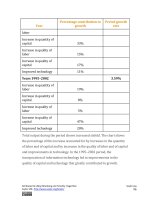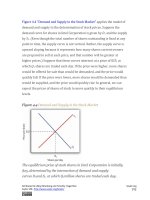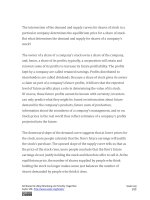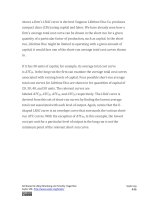Authors libby rittenberg 743
Bạn đang xem bản rút gọn của tài liệu. Xem và tải ngay bản đầy đủ của tài liệu tại đây (414.75 KB, 1 trang )
the monopsony sets its factor price based on the factor supply curve it
faces.
Monopsony in the Real World
Although cases of pure monopsony are rare, there are many situations in
which buyers have a degree of monopsony power. A buyer
has monopsony power if it faces an upward-sloping supply curve for a
good, service, or factor of production.
For example, a firm that accounts for a large share of employment in a
small community may be large enough relative to the labor market that it
is not a price taker. Instead, it must raise wages to attract more workers. It
thus faces an upward-sloping supply curve and has monopsony power.
Because buyers are more likely to have monopsony power in factor
markets than in product markets, we shall focus on those.
The next section examines monopsony power in professional sports.
Monopsonies in Sports
Professional sports provide a setting in which economists can test theories
of wage determination in competitive versus monopsony labor markets. In
their analyses, economists assume professional teams are profitmaximizing firms that hire labor (athletes and other workers) to produce a
product: entertainment bought by the fans who watch their games and by
other firms that sponsor the games. Fans influence revenues directly by
purchasing tickets and indirectly by generating the ratings that determine
television and radio advertising revenues from broadcasts of games.
Attributed to Libby Rittenberg and Timothy Tregarthen
Saylor URL: />
Saylor.org
743









